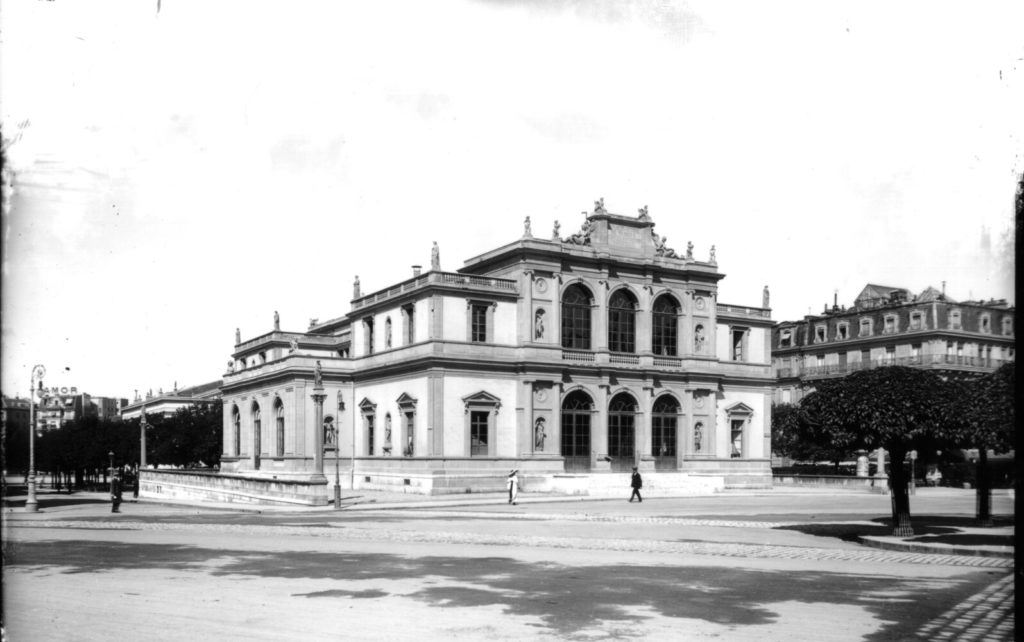A brief history of music schools in Switzerland
Several Swiss music schools are celebrating their 50th anniversary this year. Some of them were born in the 1970s. Others are older. Here - in brief - is their history.

The Geneva Conservatory building on Place Neuve, inaugurated in 1858 - the first music school in Switzerland (CGME)
Music schools are often called "conservatories", and the origin of this word is amusing: from the 16th century onwards in Italy, priests created institutions that took in young girls, orphans or from very poor families. They "conserved" them until they reached marriageable age, preparing them to become respectable women by giving them a good musical education. Little by little, the music courses given in these "conservatori" were opened to the public.
During the French Revolution, the Académie royale de musique and the Ecole royale de chant were of course closed, and a new institute inspired by the Italian schools was created in their place in 1795. It was called the Conservatoire de Musique. Its function? "To produce musicians who could celebrate national holidays."
The concept crossed the border in 1835, when financier and patron François Bartholony founded the Geneva Conservatory of Music. Franz Liszt was one of its teachers. Other schools of this type were born in the same spirit. Berne opened its School of Music in 1858. It trained only amateurs until 1892, when it was renamed Conservatoire (Konservatorium für Musik in Bern) in 1927. The Lausanne Conservatory was founded in 1861. It was followed by Schaffhausen in 1866, Basel in 1867, Zurich in 1876 and Fribourg in 1904.
The Vevey Conservatory of Music was founded in 1915 by Mathilde and Emile de Ribaupierre. The Neuchâtel Conservatory was founded in autumn 1917. Georges Humbert, its first director, enthused in his opening address: "It is abnormal that a city like Neuchâtel does not have an institution of musical education worthy of the rank it occupies in Switzerland as a city of education and instruction." Quite a program.
In 1927, Charles Faller took part in the creation of a School of Music, soon to be known as the Conservatoire de La Chaux-de-Fonds. In 1949, Georges Haenni founded the Conservatoire cantonal du Valais. The Conservatoire de Musique de Montreux was founded in 1964 on the initiative of Marcel Debluë, with Ernest Ansermet among the leading figures on the patronage committee. The same year saw the birth of the Ecole Jurassienne et Conservatoire de Musique in Delémont. In 1974, the Ecole de Musique de Saint-Imier was founded, later to become the Ecole de Musique du Jura Bernois.
Let's not forget that alongside these official institutions, there are many other music schools. Since the Middle Ages, abbeys and convents have offered courses based on liturgical chant. Instrument lessons were mostly given privately by musicians, but also by trumpet, fife and drum companies, as well as by military music ensembles, from which marching bands evolved. Choirs, both secular and religious, also trained amateur singers. And then there were the personalities who set up their own schools, such as Emile Jaques-Dalcroze, a teacher at the Geneva Conservatory, who founded the institute that bears his name in 1915.
After the Second World War, a movement to create new music schools flourished throughout Europe, and Switzerland was no exception. In the same year, 1975, the Swiss Association of Music Schools (ASEM) and the European Union of Music Schools were born. Since then, some 400 music schools have sprung up in our country.






